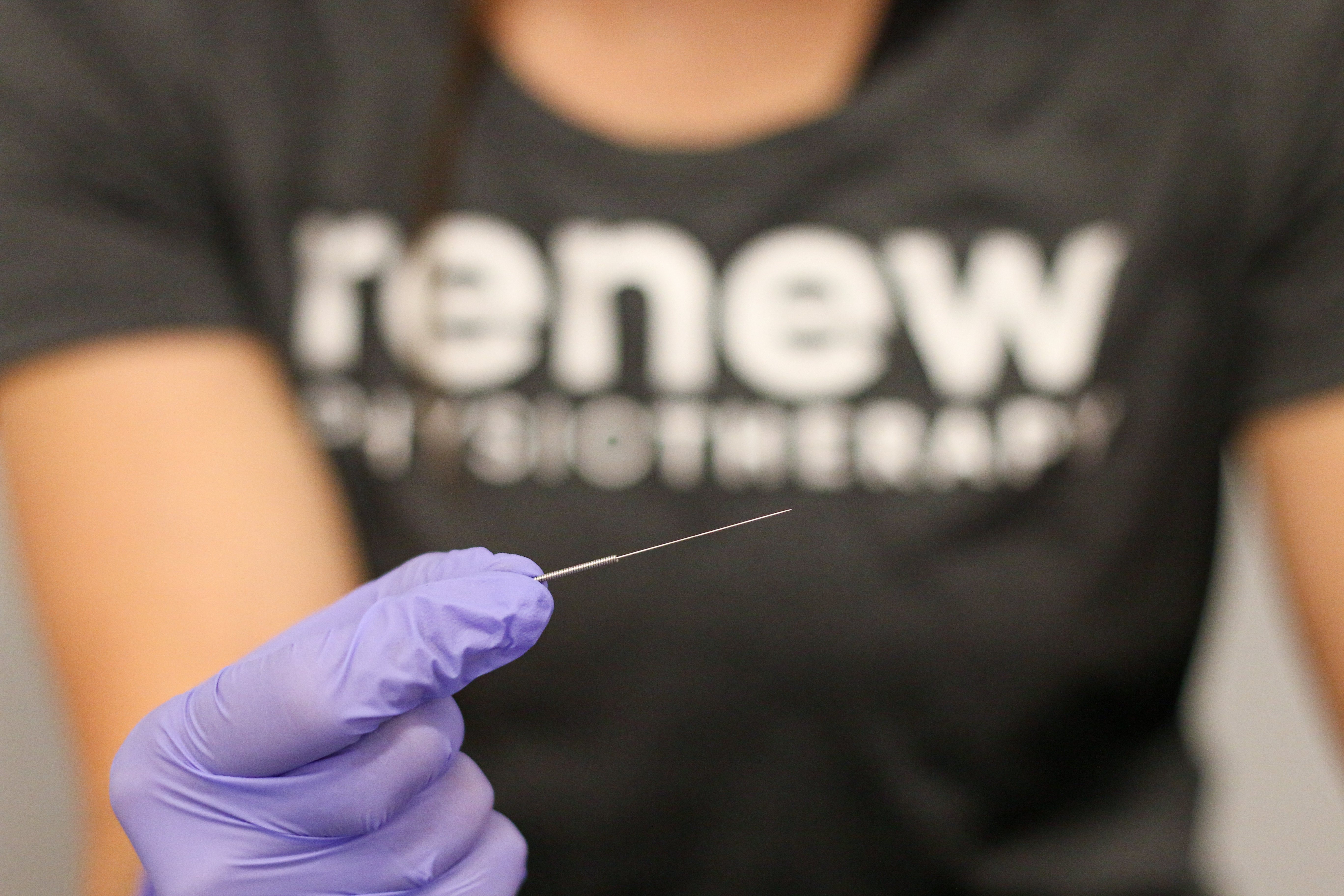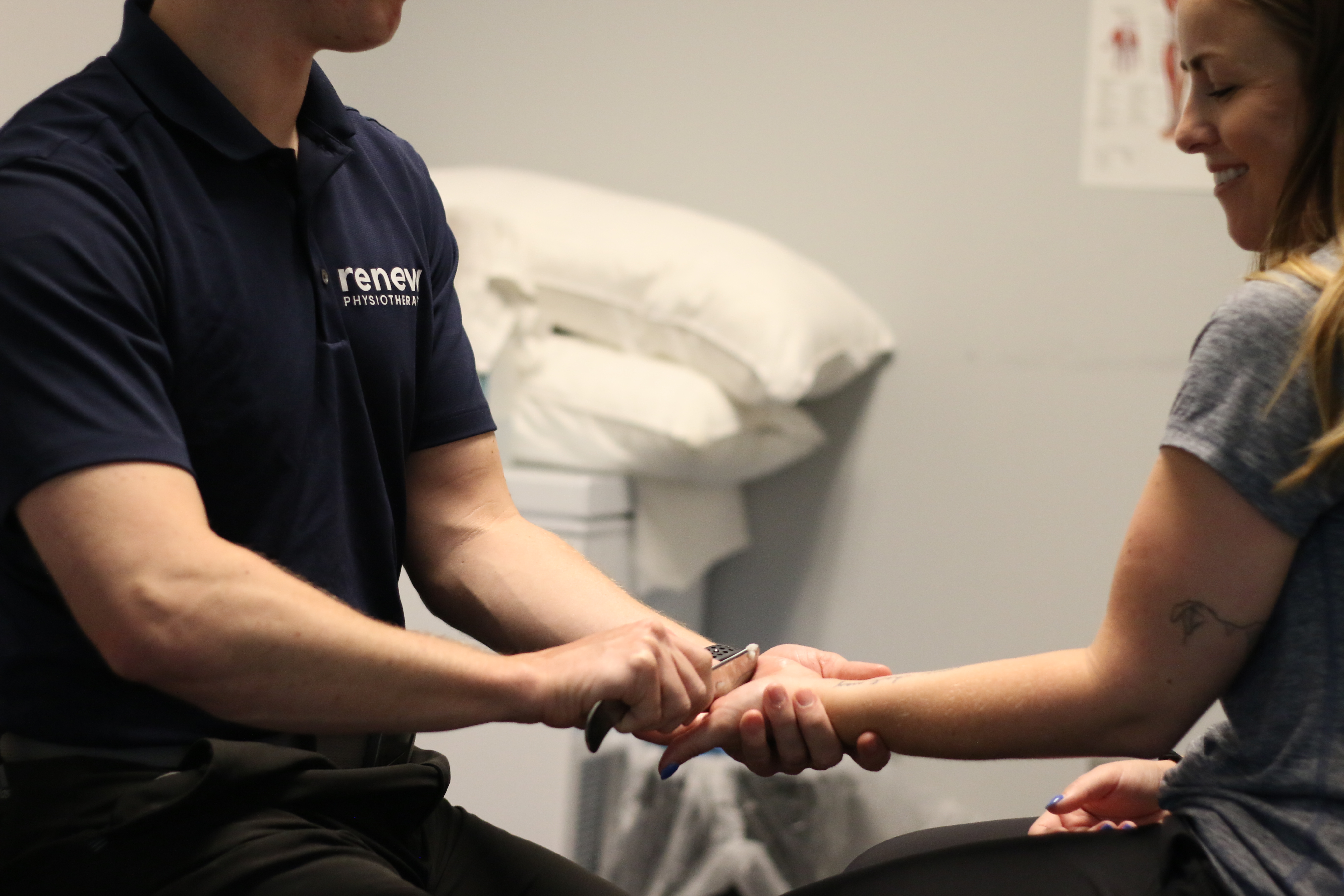Getting poked by a tiny needle may sound crazy, but dry needling therapy has become an increasingly popular treatment option for pain relief. As dry needling continues to become more mainstream in the healthcare world, it’s time to learn what dry needling is, what it does, and why is it so popular?
What is Dry Needling?
Dry Needling is a popular technique used by healthcare professionals, usually physical therapists, to care for musculoskeletal pain and dysfunction. The term “Dry Needling” comes from the process of inserting a thin needle into the skin and underlying tissues, including muscles. There is no substance or medication being injected therefore making it “dry.” While dry needling tends to give instant relief, it is typically a part of a larger personalized treatment plan involving exercises, stretches and other techniques.
You might be wondering if dry needling is the same thing as acupuncture. Although both treatments use the same needle, the answer is no. Acupuncture is rooted in traditional Chinese medicine and aims to balance energy flow through meridians (strings). During acupuncture treatment, the needles are typically left in place for 15 to 30 minutes.
Dry needling is based on modern Western medicine principles and focuses on releasing myofascial trigger points. These trigger points are tight knots within muscles that can cause pain and restrict movement. Dry needling technique stems from trigger point injections, where medication is injected into the trigger point for relief. As they realized that there is a limit on how often medication should be injected, they soon realized that dry needling gives the same relief therefore a new treatment was born!
How Does it Work?
The physical therapists first do an initial evaluation to find imbalances and trigger points, which usually appear as tight knots in muscles. These trigger points form from overuse of the muscles, which causes the muscle fibers to lack blood supply. This leads to lack of oxygen and nutrients that muscles need to recover.
Once the trigger points are located, the physical therapist inserts a thin needle into the skin and muscle tissues. By inserting a needle into these trigger points, it can stimulate a local twitch response. This twitch response is a brief contraction of the muscle fibers, which helps release the tension and knots within the muscle, promoting relaxation and improved muscle function. Don’t worry, twitching is a good thing!
There are two main ways to perform dry needling: pistoning and retention. The pistoning technique involves moving the needle up and down through the muscle. While the retention technique leaves the needle in place. Physical therapists will usually decide on the technique based on the location of the trigger points. Sometimes they might even combine dry needling with electrical stimulation tools to encourage more of a release of tension.
Many people see instant relief after dry needling treatment. But there is also the chance that you’ll feel some soreness in the treatment area. The soreness will typically last 24-48 hours. Read our blog on how to best prepare your body for dry needling treatment.
Benefits of Dry Needling
Dry needling can help reduce pain, improve muscle function, increase range of motion, and accelerate the healing process in various musculoskeletal conditions. It also helps release endorphins, which are natural painkillers allowing people to feel instant relief without the use of drugs.
Some of the most common conditions Renew Wellness Physiotherapists treat with dry needling are:
- Acute Sprains and Strains
- Muscle Spasms
- Headaches
- TMJ
- Shoulder Pain and Rotator Cuff Injuries
- Tennis Elbow
- Plantar Fasciitis
- Low Back Pain/Sciatica
- Chronic Pain
Interested in Dry Needling?
Contact a Renew Wellness Physiotherapist today! Every Renew Physiotherapist is Dry Needling Certified and can answer any questions you may have!
It's important to note that dry needling should only be performed by qualified healthcare professionals who have received appropriate training and certification in the technique. It's also crucial to consult with a healthcare provider to determine if dry needling is appropriate for your specific condition and overall health.










